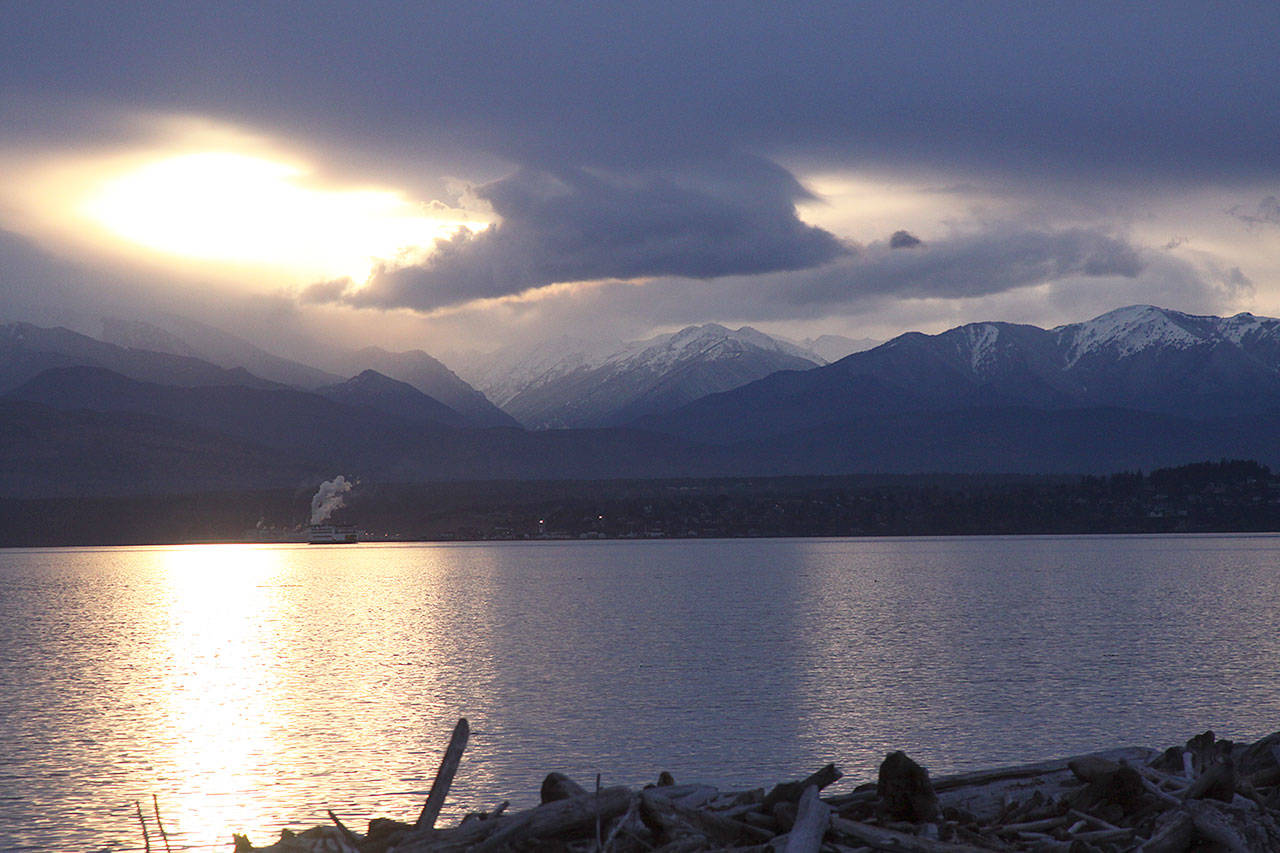It’s not your imagination, it’s really gloomy around here. In fact, we’re No. 1 in glum.
Island County is the least sunniest county in the lower 48, according to a federal study that measures solar radiation — the rays of energy emitted by the sun that hit the earth. On an average day, 12,946 kilojoules of solar radiation per square meter shine down on Island County.
Translation: Not many rays in our days.
We get less sun than even Seattle, ranked as the cloudiest large city in the nation with 226 days of heavy clouds per year, according to the NOAA National Climatic Data Center. The sunniest/least sunniest study, officially called North America Land Data Assimilation System Daily Sunlight, uses satellite data collected by NASA between 1979 and 2011.
The Centers for Disease Control and Prevention crunched the data and produced a map showing county-by-county comparisons of solar radiation, excluding Hawaii and Alaska. The sunniest spot is Imperial County, Calif. and the sunniest region is the Southwest.
The Northwest, Great Lakes and Northeast are all equally dreary. Latitude, lakes, oceans, mountains, terrain, tilt of the earth and air pollution all factor into where, when and how long the sun shines. That’s why some weather experts and local weather wonks question Island County’s title of sunshine-less capitol of the lower 48.
“This is certainly wrong since Island County is often in the rain and cloud shadow of the Olympics and thus is sunnier than King County,” said Cliff Mass, professor of Atmospheric Sciences at the University of Washington who publishes a weather blog, www.cliffmass.blogspot.com
“When I want sun in the winter, I often travel to Whidbey Island, ” Mass said. “Ebey’s Landing is my favorite, followed by fresh shellfish at Captain Whidbey Inn.”
The rain shadow effect that falls on Central Whidbey accounts for less rain in Coupeville, but it doesn’t lessen cloud cover, explained state climatologist Nick Bond.
“Where the rain shadow is isn’t necessarily where the clouds are suppressed,” said Bond.
David Britton, who created a website devoted to the Olympic rain shadow, www.olympicrainshadow.com, held firm to the protective power of what he calls “the shadow.”
“It is extremely unlikely that Island County receives less sunlight and thus less solar radiation than, say, Grays Harbor County and likely many other counties in Washington State,” Britton wrote in an email. “Much of Island County receives substantially less precipitation than surrounding areas, with Coupeville especially dry.”
After moving to the North Olympic Peninsula, Britton conducted his own solar radiation study comparing rain shadow locations to downtown Seattle for one year.
Sequim, Port Angeles, Port Townsend, Coupeville, southern San Juan Islands and Victoria, B.C. all benefit from the rain shadow effect, Britton says.
This weather phenomenon lessens the strength of storms cresting over the Olympic Mountain range, producing drier, warmer air in an elliptical shadow from Sequim to Anacortes. Britton’s 2010-2011 sunshine study found 127 mostly sunny days in the rain shadow versus 88 mostly sunny days in Seattle.
William Ingram, Jr., who runs a popular Facebook page titled North Whidbey Island Weather, initially questioned the NASA/CDC Daily Sunlight study. But then he spent some time in the sun Easter weekend.
“It makes sense that we have less solar radiation and therefore are less ‘sunny,’ given that the sun is at such an angle most of the year,” said Ingram, a self-described “weather geek” who worked for the Navy as an aviation electronics technician.
Ingram says he experiences more sunburn on Whidbey Island than he did based in San Diego, which he attributes to the angle of the sun. He’s correct, but there’s another reason up there. Clouds.
Many Washington residents fail to protect themselves from the sun’s rays with sunscreen or hats because of the predominantly overcast skies, public health experts say. But harmful ultraviolet rays still get through.
Washington’s rate of new skin cancer cases is 35 percent higher than the national average, according to the CDC.
And Island County’s rate is 130 percent above the national average. It has one of the top 10 rates of new skin cancer diagnoses among counties nationwide, warns a fact sheet produced by the Environmental Protection Agency.
But it’s not all cloudy with a 50 percent chance of despair in our corner of the world.
When all 50 states are compared, Cloud Bay, Alaska is the king of clouds. On 354 days a year, clouds cover over one-quarter of its sky.
And the wettest state? Hawaii. Its 64 inches of annual precipitation is 25 inches more than the annual rainfall of the Evergreen State.



